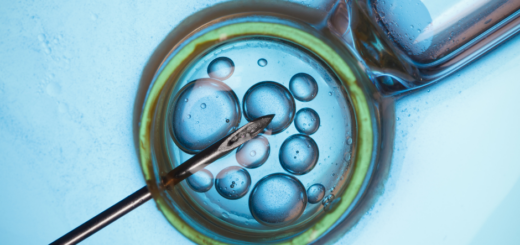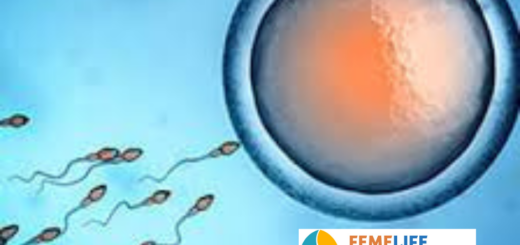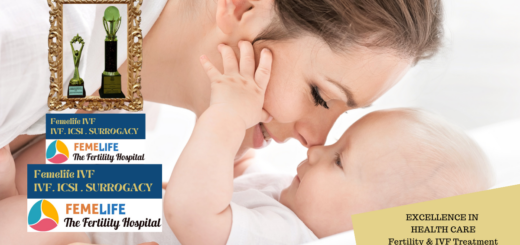Embryo Freezing in IVF Treatment – Procedure & Advantages
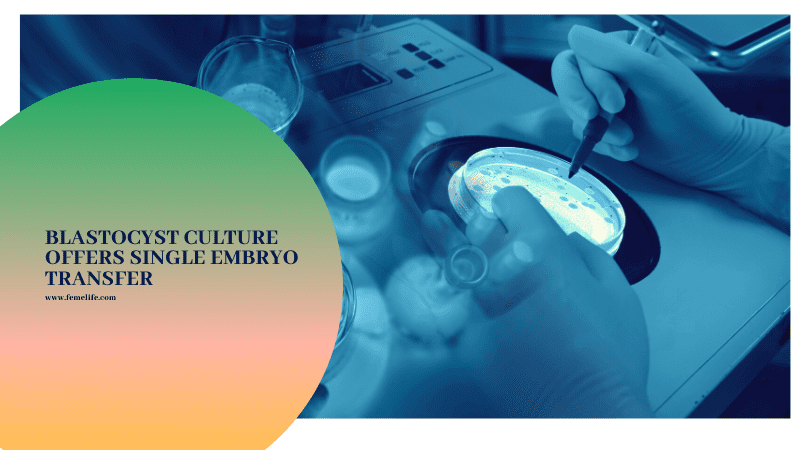
Embryo freezing
The procedure of Embryo freezing is done along with fertility treatment in an IVF laboratory. It allows people to store gametes, reproductive tissue, and embryos for later use. The first successful pregnancy resulting from stored healthy embryos took place in the 1980s. Since then, many people have frozen embryos and used them later. If your doctor has given this option, you must know the risks and advantages.
This is a laboratory procedure that begins with the injection of hormones and other medications to stimulate the production of potentially fertile eggs. The eggs are then extracted from the ovaries, either for fertilizing in a lab or for freezing. A person may wish to freeze their eggs. Or, they may wish to use them at once to become pregnant. Fertilization of eggs with sperm can be achieved either with in vitro fertilization (IVF) or intracytoplasmic sperm injection (ICSI). Often with in vitro fertilization (IVF) or Intracytoplasmic sperm injection (ICSI) treatment, there may be good quality embryos left over after embryo transfer. Instead of discarding them, there is the option to freeze them to use in the future. A person can also freeze eggs and sperm, which are not fertilized. Embryos can be frozen to preserve fertility so it may be possible to have a baby at a later date.
When Embryo freezing is recommended?
- Embryo cryopreservation is useful for surplus embryos during in vitro fertilization. Patients who fail to conceive may become pregnant using these embryos in subsequent cycles. Successful patients in IVF treatment may come back later for frozen embryo transfer to achieve a sibling pregnancy.
- Surplus oocytes or embryos resulting from fertility treatments may be stored for oocyte donation or embryo donation to another woman or couple by freezing. At times embryos may be created, frozen, and stored specifically for transfer and donation by using donor eggs and sperm.
- When the endometrium is not ready for implantation embryos may be frozen for use at later date. This situation arises in patients with thin endometrium or oocyte donation and surrogacy program.
- There are certain situations like ovarian hyperstimulation when fresh embryo transfer becomes risky for the woman’s health. In this scenario, embryos are frozen for later use.
- Young patients undergoing cancer therapy can freeze their eggs, ovarian or testicular tissue for future use. Rare instances where the mother is not fit to undergo a pregnancy may freeze embryos. They can come later for embryo transfer when the health issue is resolved.
How do people freeze embryos?
Cryo-preservation or cryo-conservation is a process where cells, tissues or organs are preserved by cooling to very low temperatures. Cryopreservation was applied to humans beginning in 1954 with the pregnancies resulting from the insemination of previously frozen sperm. There are two ways of storing embryos.
Slow freezing: This involves placing the embryos in sealed tubes, then slowly lowering their temperature. It prevents the embryo’s cells from ageing and reduces the risk of damage. However, slow freezing is time-consuming, and it requires expensive machinery.
Vitrification: In this process, the tissue is frozen after cryoprotection. The embryos are frozen so quickly that the water molecules do not have time to form ice crystals. This helps protect the embryos and increases their rate of survival during thawing. In the laboratory, large tanks filled with liquid nitrogen are available in which embryos are stored. The embryos remain in sealed containers at temperatures of -321ºF. At this temperature, almost no biological processes, such as ageing, can occur.
The tanks that contain frozen embryos are monitored 7 days a week. Each tank gets a physical inspection daily, looking for problems or signs of problems. The quantity of nitrogen in the tank is assessed as a means of monitoring for a possible slow leak or an impending tank failure. The nitrogen in the tank is topped up daily, since it continuously evaporates at a slow rate.
When to freeze embryos?
Not all embryos are suitable for freezing, so only good quality embryos will be chosen to freeze. Embryos can be frozen at different stages of their development – when they’re just a single cell, at the two to eight-cell stage or later in their development (called the blastocyst stage). Eggs and sperm can also be frozen without fertilizing.
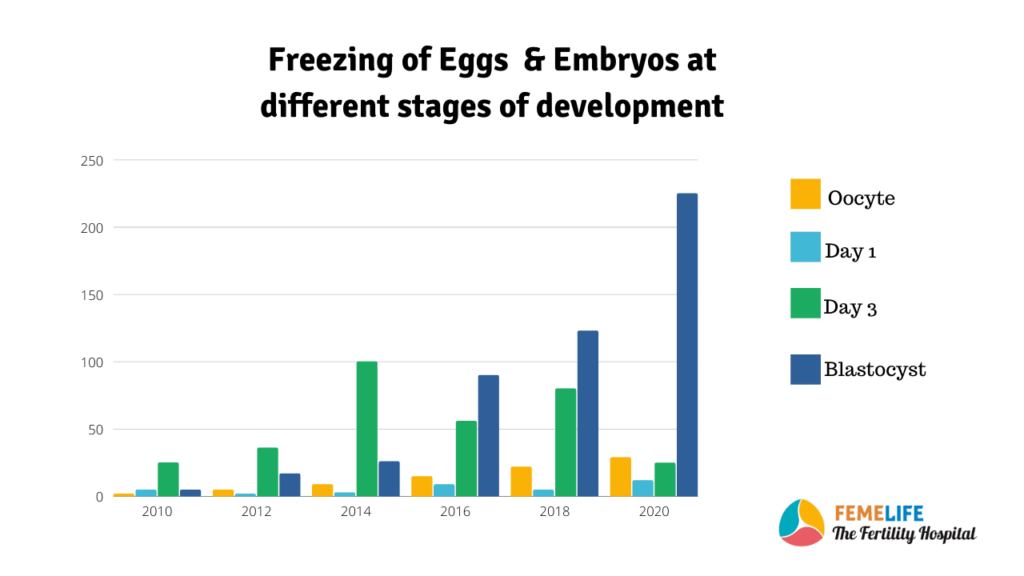
What is the success rates of thawing?
The process of thawing an embryo after cryopreservation has a relatively high success rate, and research suggests that women who use thawed embryos have good chances of delivering healthy babies.
How long can embryos stay frozen?
Procedures for human embryo freezing were developed in 1984 and only went into widespread use in the late 1980s. This means that the longest time a human embryo has been stored is 25-30 years. However, patients that have left embryos in storage for this long are not coming back for them.
In theory, a correctly frozen embryo can remain viable for any length of time. But different laws regulate length of freezing in different countries. Most countries allow freezing up to 10 years. The embryos remain in sealed containers at temperatures of -321ºF. At this temperature, almost no biological processes, such as aging, can occur.
Frozen or fresh embryos – which is better?
Many studies have been done recently for the development of a better storage process. A study published in the International Journal of Reproductive Biomedicine looked at the results of over 1,000 instances of embryo transfer involving either fresh or frozen embryos. The researchers found no statistical difference between the types of embryos, in terms of pregnancy rates or fetal health.
Freezing of human sperm, eggs and embryos @ Femelife
Within the laboratory at Femelife we have a tissue bank where we freeze and store oocytes (eggs), sperm and embryos for our patients. The bank has personnel and computerised system for full time monitoring. The procedure is done under supervision of the lab director, and is licensed by the ICMR, Govt of India. All tissue in the bank is stored frozen in liquid nitrogen at a temperature of -196C in vacuum lined tanks that are computer controlled and monitored 7 days a week with a dedicated alarm system. The embryologists are responsible for maintaining the bank and no other employee has access to it.
The process of freezing eggs vs freezing embryos:
The embryo and egg freezing procedure starts the same basic way with hormone medication, injected over for 8–12 days, that stimulates the ovaries to produce multiple eggs. Freezing multiple eggs increases the chances of finding healthy eggs later. Studies have shown that embryos survive the freeze-thaw process better than eggs. The freezing of eggs is a recent procedure and may need further development for wide usage.
What are the risks associated with it?
Risk of contamination
Since viruses and bacteria can also survive at cryogenic temperatures it needs special attention. The risk of cross-contamination, i.e., transfer of bacteria or other microorganisms from liquid nitrogen to stored samples, it should be taken care of. Some investigators have suggested that liquid nitrogen should be sterilized in order to prevent such contamination when so-called open cryo devices, which bring the sample in direct contact with the liquid, are utilized.
Risk of reduced or lost viability
In Embryo freezing Long-term storage does not impact the viability/developmental potential of slow-frozen embryos. Cryostorage appears to be safe for slow-frozen oocytes as well.
Risk of specimen loss in frozen embryo
In contrast to the risk of infection or time-related decrease in viability, under current practices the risk of loss of cryopreserved gametes and embryos due to human error or equipment failure is relatively high. It is the responsibility of the IVF laboratory to take proper care of the procedure in vital procedures like cryo-freezing.
Risks inherent in shipment and handling
At times, frozen eggs or embryos need transportation for further use according to patient convenience. The shipping procedure carries risk of vessels being exposed to elevated ambient temperature and air pressure, vibration/other physical shock, and horizontal storage.
A two-step removal of vitrified samples, during which the embryologist holds the sample the neck of a dewar in nitrogen vapour for 15 seconds. It leads to reduced viability due to thermodynamic instability and devitrification at relatively low temperatures. Cross country transportation of eggs and embryos have to abide by rules of the same country.
Embryo freezing is a type of fertility preservation. It may be useful for women with cancer who want to have children after having radiation therapy, chemotherapy, or certain types of surgery, which can cause infertility. Also, embryo banking and embryo cryopreservation can help women to plan family later.
Read More

